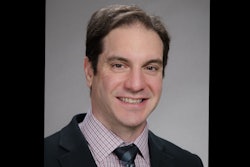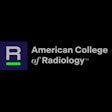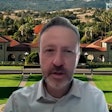Job vacancies continue to persist among technologists at imaging practices, but there are ways to navigate these challenges for both staff and managers.
The American Society of Radiologic Technologists (ASRT) in July released its annual Radiologic Sciences Staffing and Workplace Survey, showing that vacancy rates remain high among all imaging specialties. CT, MRI, and bone densitometry increased while all other specialties included in the survey experienced slight decreases from the previous survey. However, they’re still above 2020 numbers.
Chaundria Singleton, an MRI and CT technologist and consultant based in Atlanta, GA, with 23 years of experience, said that employment numbers in the technologist field have not recovered since the COVID-19 pandemic.
“I think a lot of people who had been in the field for a long time exited more than what we expected,” said Singleton, who now works with C&C Imaging Services and co-hosts the A Couple of Rad Techs podcast. She has also served as an ASRT ambassador.
Possible causes and consequences
The current vacancy trends may be due to job candidates not agreeing to the salary expectations and poor communication, Singleton told AuntMinnie. She added that today’s employees value work-life balance more than before.
“It comes down to pay expectations that are mismatched with people’s reality,” Singleton said. “And people come into a job and think it’s one thing and they’re sadly mistaken. It’s something else that they just weren’t prepared for.”
She added that imaging practices have had to be creative in addressing vacancies with their current employees.
Chaundria Singleton highlights how imaging departments and practices have had to become creative when dealing with employment vacancies.
The ASRT reported that vacancies among CT technologists reached an all-time high. The society said the numbers align with similar trends reported by other medical societies. Consequences of these vacancies include burnout among current employees, a decrease in image quality, and a resulting decrease in patient care and outcomes.
“We all collectively … must build pipelines into the profession to increase recruitment and retention for a healthy future,” said Melissa Pergola, EdD, ASRT chief executive officer (CEO) and executive director.
What’s being done
Several specialties included in the survey experienced decreases compared with 2023. These included radiography, cardiovascular interventional technology, sonography, mammography, and nuclear medicine. Pergola said the trend for these specialties is “encouraging to see.”
ASRT President Brandon Smith, in a previous statement to AuntMinnie, said the society has received reports of increases from some academic programs since the ASRT introduced campaigns to boost awareness of the medical imaging and radiation therapy profession.
“One update we received identified a 200% increase in program applicants,” Smith said. “Practice managers have the opportunity to partner with academic programs to accommodate the increase in applicants with aligning clinical site capacities to support the growing pipeline.”
Singleton said while the ASRT survey is “eye-opening,” it could also serve as an opportunity for technologists looking to strategize their careers.
Singleton explains how the ASRT's recent workplace survey could serve as an opportunity for aspiring technologists and how technologists should strategize their careers.
Singleton added that outreach to middle and high school students and their parents, teachers, and guidance counselors could inspire the next generation of technologists.
“Every time I do a career day, … they are just like ‘I didn’t know that you guys did all of that,’ ” she said. “They’re shocked at all the different levels and things you can do within medical imaging. They’re Planting that seed earlier really can help. I think they kind of don’t realize that we do much more than just take pictures of bones.”
The ASRT’s Be Seen campaign, meanwhile, seeks to spread awareness of the field and specialties to aspiring technologists through educational courses, patient testimonials, and statistics highlighting the importance of this work. Pergola said the campaign will continue for “at least” the next three years.
Melissa Pergola, EdD, explains how the ASRT is addressing employment vacancies through the society's educational and philanthropic initiatives.
Pergola, in her video message to AuntMinnie, said the ASRT is working with middle and high schools and career development centers for learning opportunities about the radiologic sciences. She added that the ASRT Foundation is offering scholarships to medical imaging and radiation therapy students, as well as research grants for technologists already working in the field.
“In fiscal year 2024 alone, the foundation awarded 253 scholarships and grants totaling over $537,000,” she said.




















